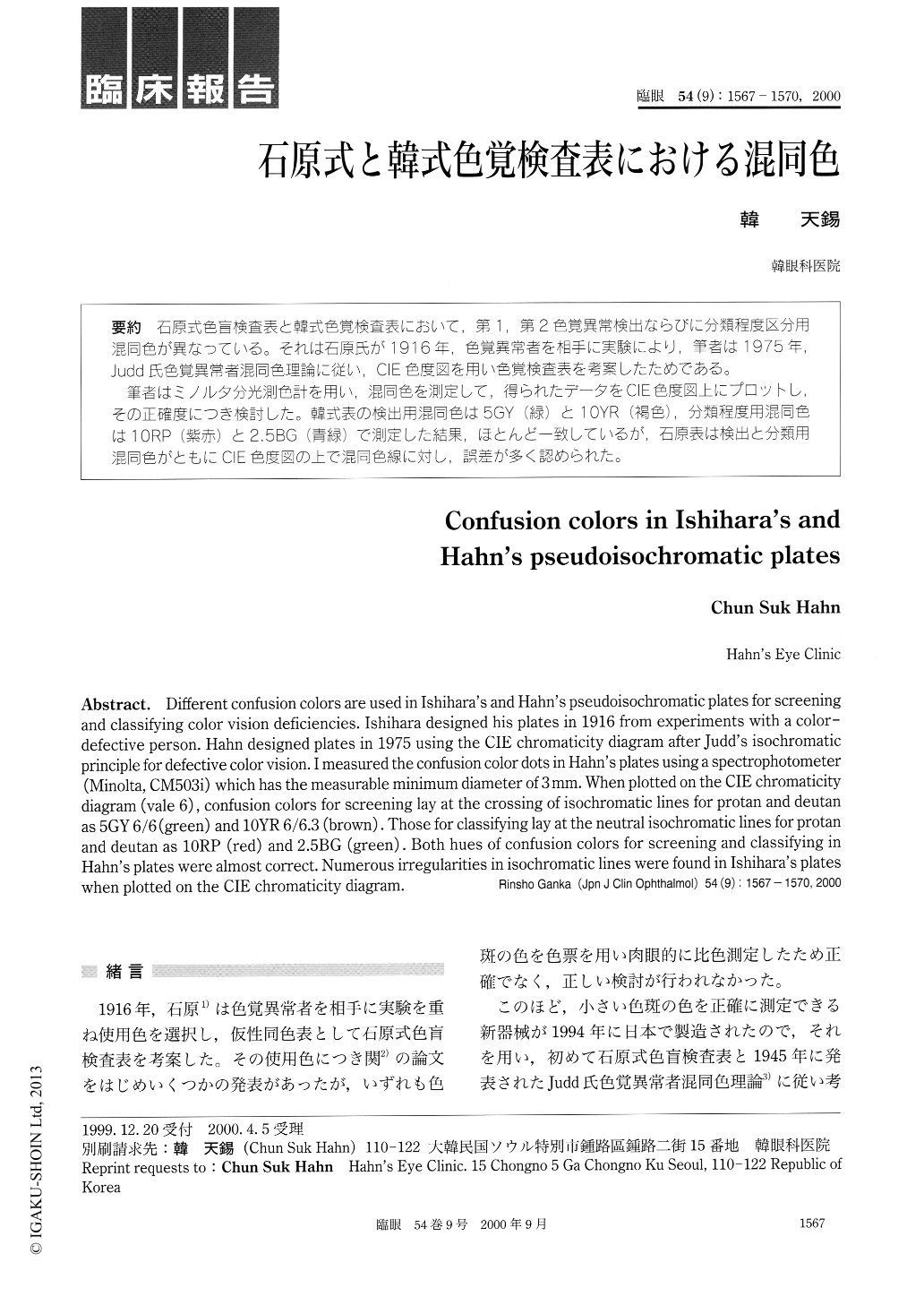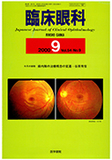Japanese
English
- 有料閲覧
- Abstract 文献概要
- 1ページ目 Look Inside
石原式色盲検査表と韓式色覚検査表において,第1,第2色覚異常検出ならびに分類程度区分用混同色が異なっている。それは石原氏が1916年,色覚異常者を相手に実験により,筆者は1975年,Judd氏色覚異常者混同色理論に従い,CIE色度図を用い色覚検査表を考案したためである。
筆者はミノルタ分光測色計を用い,混同色を測定して.得られたデータをCIE色度図上にプロットし,その正確度につき検討した。韓式表の検出用混同色は5GY (緑)と10YR (褐色),分類程度用混同色は10RP (紫赤)と2.5BG (青緑)で測定した結果,ほとんど一致しているが,石原表は検出と分類用混同色がともにCIE色度図の上で混同色線に対し,誤差が多く認められた。
Different confusion colors are used in Ishihara's and Hahn's pseudoisochromatic plates for screening and classifying color vision deficiencies. Ishihara designed his plates in 1916 from experiments with a color-defective person. Hahn designed plates in 1975 using the CIE chromaticity diagram after Judd's isochromatic principle for defective color vision. I measured the confusion color dots in Hahn's plates using a spectrophotometer (Minolta, CM503i) which has the measurable minimum diameter of 3 mm. When plotted on the CIE chromaticity diagram (vale 6) , confusion colors for screening lay at the crossing of isochromatic lines for protan and deutan as 5GY 6/6 (green) and 10YR 6/6.3 (brown) . Those for classifying lay at the neutral isochromatic lines for protan and deutan as 1ORP (red) and 2.5BG (green) . Both hues of confusion colors for screening and classifying in Hahn's plates were almost correct. Numerous irregularities in isochromatic lines were found in Ishihara's plates when plotted on the CIE chromaticity diagram.

Copyright © 2000, Igaku-Shoin Ltd. All rights reserved.


